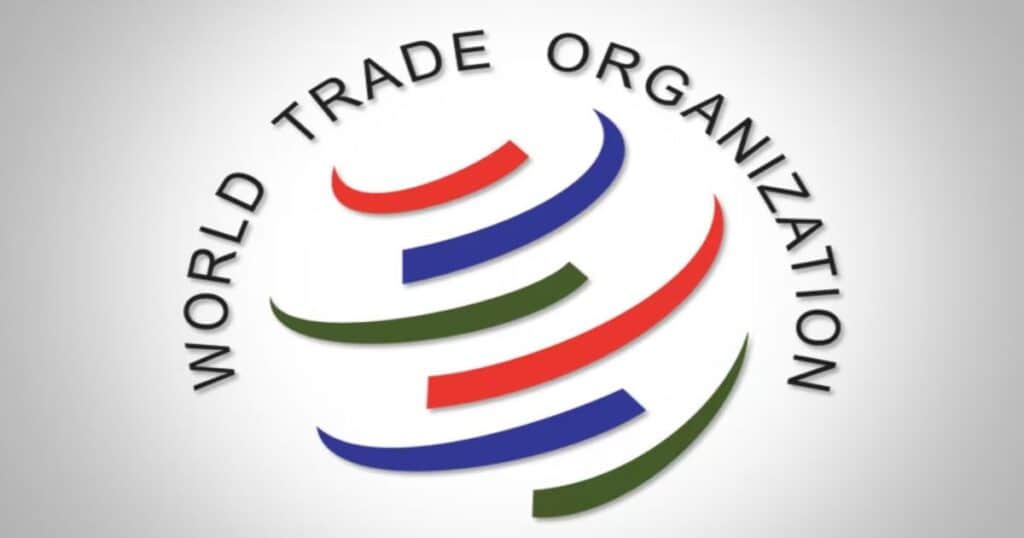Introduction to Trade-Related Investment Measures (TRIMs)
Trade-Related Investment Measures (TRIMs) are policies and regulations imposed by governments on foreign investors and multinational corporations operating within their borders. These measures can take various forms, such as local content requirements, which mandate that a certain percentage of a product’s components be sourced domestically, or trade balancing requirements, which stipulate that a company’s imports must be proportional to its exports.
TRIMs are significant in international trade because they can influence the flow of foreign direct investment (FDI) and impact the operations of multinational enterprises (MNEs). Understanding TRIMs is crucial for businesses engaged in global trade, as they can have far-reaching consequences on supply chains, production costs, and market access.
Some common examples of TRIMs include:
- Local content requirements: Requiring a certain percentage of a product’s components to be sourced from domestic suppliers.
- Trade balancing requirements: Mandating that a company’s imports must be proportional to its exports.
- Foreign exchange restrictions: Limiting the ability of foreign investors to repatriate profits or convert local currency.
Historical Background and Evolution of TRIMs
The concept of TRIMs has evolved over time, with its origins dating back to the post-World War II era when many countries sought to protect and promote their domestic industries. Initially, TRIMs were implemented by developing nations as a means of attracting foreign investment while ensuring that such investments contributed to their economic development goals.
However, as international trade and investment flows grew, concerns arose regarding the potential distortive effects of certain TRIMs on global commerce. This led to efforts by international organizations like the World Trade Organization (WTO) to establish multilateral rules and disciplines governing the use of TRIMs.
Key milestones in the evolution of TRIMs include:
- The Uruguay Round of trade negotiations (1986-1994), which resulted in the Agreement on Trade-Related Investment Measures (TRIMs Agreement) under the WTO framework.
- The ongoing discussions and negotiations within the WTO regarding the scope and coverage of the TRIMs Agreement, reflecting the evolving nature of trade and investment policies.
Key Components of Trade-Related Investment Measures
TRIMs can be classified into several categories based on their objectives and mechanisms:
- Quantitative TRIMs: These measures impose specific numerical targets or requirements on foreign investors, such as local content requirements or trade balancing requirements.
- Foreign exchange TRIMs: These measures restrict the ability of foreign investors to access or transfer foreign currency, such as limitations on the repatriation of profits or the conversion of local currency.
- Equity TRIMs: These measures regulate the ownership structure or equity participation of foreign investors in domestic enterprises, such as joint venture requirements or restrictions on foreign equity ownership.
- Operational TRIMs: These measures impose requirements or restrictions on the day-to-day operations of foreign investors, such as technology transfer mandates or export performance requirements.
It’s important to note that while some TRIMs may be designed to achieve legitimate policy objectives, such as economic development or environmental protection, they can also create distortions in international trade and investment flows, potentially leading to disputes and conflicts.
The Role of TRIMs in International Trade
TRIMs play a significant role in shaping the landscape of international trade and investment. From the perspective of host countries, particularly developing nations, TRIMs can serve as tools to:
- Promote economic development: By requiring foreign investors to source components locally or transfer technology, TRIMs can foster the development of domestic industries and enhance technological capabilities.
- Protect domestic industries: TRIMs can provide a degree of protection for local industries against foreign competition, at least in the short term, allowing them to build capacity and competitiveness.
- Attract foreign direct investment (FDI): Some countries use TRIMs as incentives to attract FDI, particularly in sectors deemed strategic or prioritized for development.
However, from the perspective of foreign investors and multinational corporations, TRIMs can be viewed as barriers to trade and investment, potentially increasing costs, limiting operational flexibility, and distorting market forces.
“TRIMs can be a double-edged sword – they can promote economic development goals, but they can also create distortions and conflicts in international trade and investment.” – World Bank Report on Trade and Development, 2020
Striking a balance between promoting national interests and adhering to the principles of free and fair trade is a constant challenge for policymakers when it comes to TRIMs.
Read More About: Understanding The 72 Sold Lawsuit: Key Details And Implication
TRIMs and the World Trade Organization (WTO)

The World Trade Organization (WTO) plays a crucial role in regulating and monitoring TRIMs through its Agreement on Trade-Related Investment Measures (TRIMs Agreement). The TRIMs Agreement, which entered into force in 1995, aims to promote transparency and non-discrimination in international trade and investment by establishing rules and disciplines for the use of TRIMs.
Key provisions of the TRIMs Agreement include:
- Prohibition of certain TRIMs: The agreement prohibits specific TRIMs that are deemed inconsistent with the principles of the General Agreement on Tariffs and Trade (GATT), such as local content requirements and trade balancing requirements.
- Notification and transparency requirements: WTO members are required to notify the organization of any TRIMs they maintain or introduce, promoting transparency and facilitating monitoring.
- Dispute settlement mechanisms: The WTO’s dispute settlement system provides a framework for resolving trade disputes related to TRIMs, ensuring that members comply with the agreed-upon rules and principles.
The TRIMs Agreement has played a significant role in promoting a more predictable and stable environment for international trade and investment, although debates continue regarding its scope, effectiveness, and the need for further reforms.
Examples of Trade-Related Investment Measures in Practice
TRIMs have been implemented by various countries around the world, often with specific objectives and contexts in mind. Here are a few examples:
- Local Content Requirements in the Automotive Industry:
- Several countries, including Brazil, Argentina, and Indonesia, have implemented local content requirements for the automotive sector, mandating that a certain percentage of a vehicle’s components be sourced from domestic suppliers.
- These measures aim to support the development of local automotive supply chains and promote domestic manufacturing capabilities.
- Trade Balancing Requirements in the Energy Sector:
- Some energy-producing countries, such as Indonesia and Nigeria, have imposed trade balancing requirements on foreign oil and gas companies, requiring them to balance their imports with exports or domestic sales.
- These measures are intended to ensure that a portion of the extracted resources benefits the domestic market and contributes to economic development.
- Foreign Exchange Restrictions in Emerging Markets:
- Countries like India and China have historically imposed foreign exchange restrictions on foreign investors, limiting their ability to repatriate profits or convert local currency.
- These measures are designed to manage capital flows and maintain stability in the foreign exchange market, although they can also create challenges for foreign investors.
It’s important to note that the implementation and impact of TRIMs can vary significantly depending on the specific context, industry, and economic conditions of the host country.
Impact of TRIMs on Developing and Developed Economies
The impact of TRIMs on economies can be multifaceted and sometimes controversial. While TRIMs can provide policy tools for developing countries to promote economic development and protect domestic industries, they can also create distortions and inefficiencies in the global trading system.
Potential Benefits for Developing Economies:
- Promotion of domestic industries: TRIMs can help nurture and protect infant industries, allowing them to develop competitive capabilities and eventually integrate into global value chains.
- Technology transfer: Measures such as joint venture requirements or technology transfer mandates can facilitate the transfer of advanced technologies and know-how to domestic firms.
- Increased employment and economic activity: Local content requirements can stimulate demand for domestically produced goods and services, potentially creating job opportunities and economic activity.
Challenges for Developing Economies:
- Reduced foreign direct investment (FDI) flows: Overly restrictive TRIMs can discourage foreign investors, leading to lower levels of FDI and potentially hampering economic growth.
- Higher costs and inefficiencies: TRIMs can increase production costs for foreign companies, which may be passed on to consumers or make the host country less competitive as an investment destination.
- Retaliation and trade disputes: The use of certain TRIMs may violate international trade agreements, potentially leading to retaliation from trading partners or disputes at the WTO.
For developed economies, the impact of TRIMs is often viewed through the lens of market access and competitiveness for their multinational corporations. While some developed countries may use TRIMs to protect strategic industries, they generally advocate for the reduction or elimination of trade-distorting measures imposed by other nations.
Challenges and Controversies Surrounding TRIMs
Despite their potential benefits, TRIMs remain a contentious and debated topic in the realm of international trade and investment. Several challenges and controversies surround their implementation and regulation:
- Effectiveness and Necessity of TRIMs:
- There is an ongoing debate about the effectiveness of TRIMs in achieving their intended policy objectives, such as promoting economic development or protecting domestic industries.
- Critics argue that TRIMs can create market distortions, inefficiencies, and unintended consequences, potentially outweighing their benefits.
- Some economists contend that more indirect and market-friendly policies, such as investment in education, infrastructure, and research and development, may be more effective in promoting sustainable economic growth.
- Conflicts with Trade Agreements and Principles:
- Certain TRIMs, such as local content requirements and trade balancing measures, are explicitly prohibited under the WTO’s TRIMs Agreement as they violate the principles of national treatment and non-discrimination.
- However, some countries argue that TRIMs are necessary tools for promoting economic development and that the TRIMs Agreement should be revisited or expanded to accommodate their policy needs.
- Transparency and Compliance Issues:
- There are concerns about the lack of transparency surrounding the implementation and enforcement of TRIMs in some countries, creating an unpredictable and non-transparent environment for foreign investors.
- Ensuring compliance with international trade rules and agreements related to TRIMs can be challenging, particularly for countries with limited institutional capacity or resources.
- Impacts on Global Value Chains and Competitiveness:
- TRIMs can disrupt the efficient functioning of global value chains by imposing localization requirements or restricting the free flow of goods, services, and investments.
- This can reduce the competitiveness of both domestic and foreign firms operating in the global market, potentially leading to higher costs and reduced consumer choice.
- Divergent Perspectives between Developed and Developing Economies:
- Developing countries often view TRIMs as necessary policy tools for promoting economic development and industrialization, while developed economies tend to prioritize market access and non-discrimination for their multinational corporations.
- Bridging this divide and finding a balanced approach that addresses the legitimate concerns of all parties remains a challenge in multilateral trade negotiations.
These challenges and controversies highlight the complexity of the TRIMs debate and the need for ongoing dialogue, policy reform, and international cooperation to strike a balance between promoting economic development and maintaining an open and fair global trading system.
Reforms and Future Trends in Trade-Related Investment Measures

As the global economy continues to evolve, the regulation and governance of TRIMs remain a dynamic and constantly evolving area. Several ongoing discussions and reforms are shaping the future landscape of trade-related investment measures:
- WTO Negotiations and Reforms:
- There are ongoing discussions within the WTO regarding potential revisions or expansions to the TRIMs Agreement, reflecting the evolving needs and priorities of member countries.
- Proposals have been made to clarify the scope and coverage of the agreement, address new forms of TRIMs, or provide greater flexibility for developing economies to implement certain measures.
- However, reaching consensus among WTO members on these issues has been challenging due to divergent interests and perspectives.
- Regional and Bilateral Trade Agreements:
- In addition to multilateral efforts at the WTO, many countries have been addressing TRIMs through regional and bilateral trade agreements, which often include provisions on investment policies and non-discrimination principles.
- These agreements can provide more tailored and context-specific approaches to regulating TRIMs, reflecting the unique economic and development needs of the participating countries.
- Emerging Issues and New Forms of TRIMs:
- As the global economy evolves, new forms of TRIMs may emerge in response to emerging challenges or policy priorities, such as environmental protection, national security, or digital trade.
- For example, there have been discussions around potential “green” TRIMs aimed at promoting sustainable development and addressing climate change concerns.
- Addressing these new forms of TRIMs will require adaptability and flexibility in the regulatory framework.
- Harmonization and Convergence of TRIMs Policies:
- There have been efforts to promote greater harmonization and convergence of TRIMs policies across different regions and trade agreements, aiming to reduce fragmentation and create a more coherent and predictable global investment landscape.
- Initiatives such as the ongoing plurilateral negotiations on investment facilitation at the WTO could contribute to this process by establishing common principles and practices related to investment policies.
- Capacity Building and Technical Assistance:
- To support effective implementation and compliance with TRIMs-related regulations, there is a recognized need for capacity building and technical assistance programs, particularly for developing countries.
- International organizations, such as the WTO, World Bank, and United Nations Conference on Trade and Development (UNCTAD), play a crucial role in providing training, advisory services, and knowledge sharing on TRIMs-related issues.
As the global community continues to grapple with the challenges and opportunities presented by TRIMs, it is clear that ongoing dialogue, policy reforms, and international cooperation will be essential in shaping a more transparent, predictable, and balanced regulatory framework for trade-related investment measures.
Conclusion: The Importance of TRIMs in Global Trade Governance
Trade-Related Investment Measures (TRIMs) play a crucial role in shaping the global trade and investment landscape. While they can serve as tools for promoting economic development and protecting domestic industries, they can also create distortions, inefficiencies, and potential conflicts with the principles of free and fair trade.
The regulation and governance of TRIMs through instruments like the WTO’s TRIMs Agreement have contributed to greater transparency and predictability in international trade and investment flows. However, ongoing debates and negotiations reflect the need to strike a balance between promoting national interests and adhering to established trade rules and principles.
As the global economy continues to evolve, new challenges and opportunities will emerge, requiring adaptability and collaboration in the governance of TRIMs. Addressing emerging issues, harmonizing policies across different regions, and providing capacity-building support will be essential in ensuring a level playing field and promoting sustainable economic growth.







